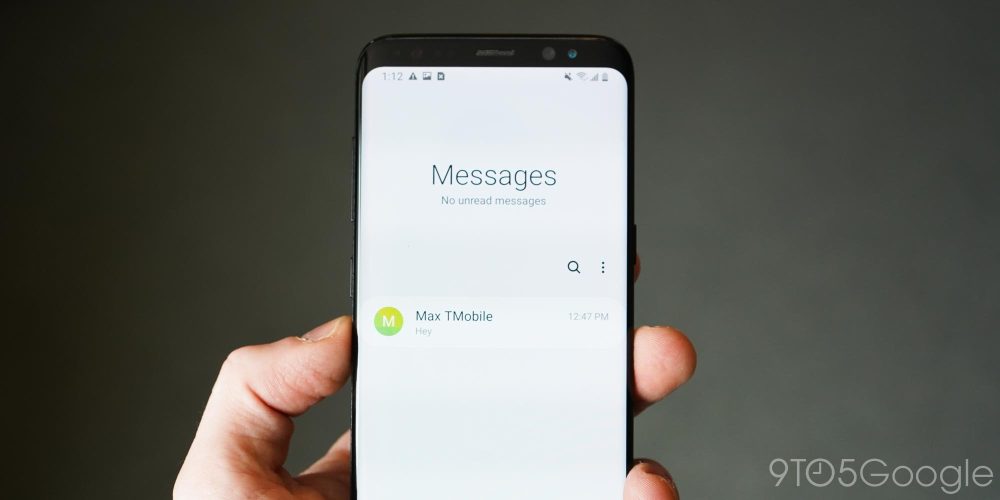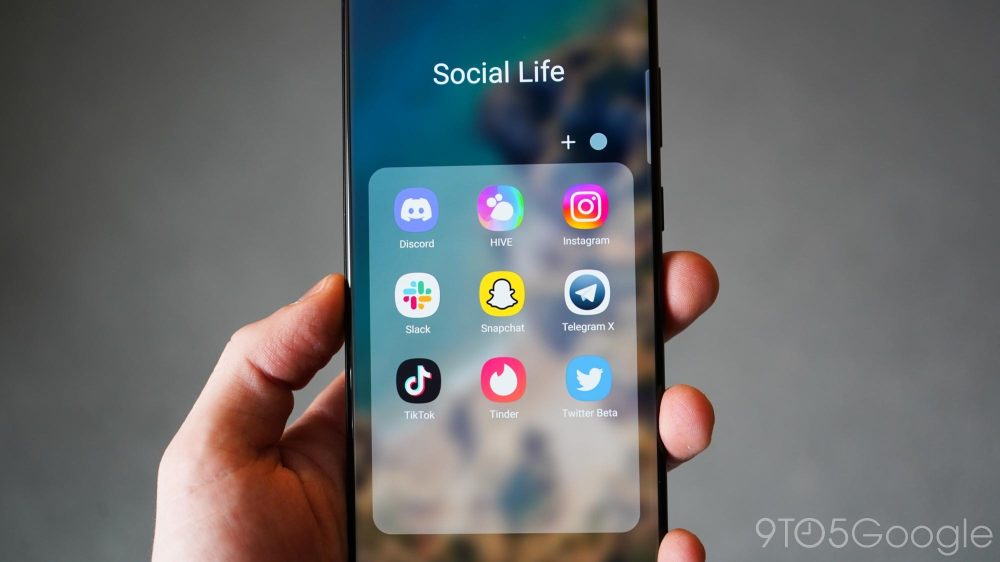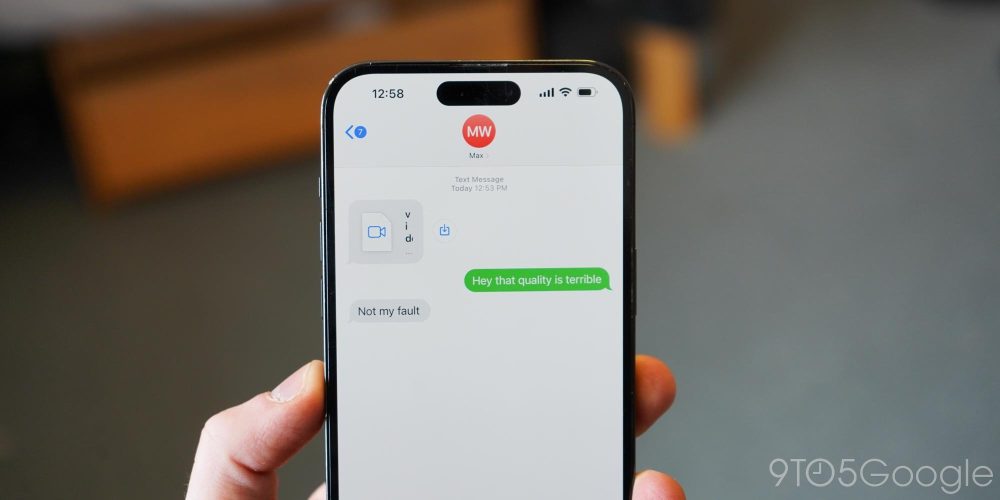
A few weeks ago, at MWC 2023, I had an opportunity to sit down with Hiroshi Lockheimer, senior vice president of Platforms and Ecosystems at Google, to talk about RCS messaging. While there was not a lot into the future of what Google is planning with Google Messages and RCS as a protocol, I did get a good look into how RCS came to be and how Google sees it.
9to5Google has a rebooted newsletter that highlights the biggest Google stories with added commentary and other tidbits. Sign up here!
For some background, RCS was introduced by the GSMA in 2008 as the successor to SMS. The GMSA is the Global System for Mobile Communications Association, a group with over 750 mobile operators and over 400 companies in the mobile ecosystem. GSMA’s main intention with it was for a modern communications protocol that did not run on voice networks, because back then and to some extent now, SMS used the same cellular channels as a phone call. It was and is wildly outdated, inefficient, and not secure. That’s why GSMA designed RCS, to replace the outdated platform.
A few years after GSMA introduced RCS (and as apps like WhatsApp took off), Lockheimer said GSMA approached Google about the standard at MWC. Google, on investigating RCS, realized that the GSMA was right, SMS was nearly 20 years old at the time and needed to be modernized. This was before iMessage was announced – Apple had figured out the same thing and decided to implement iMessage as their answer to the aging protocol.
This was the start of RCS for Google and the Android team, but as Lockheimer said, “It’s a long game, you know, that is one of the learnings for sure that you have to stick to it and kind of keep going.” He explained that even though GSMA approached them about bringing support for RCS, carriers had different ideas of how they wanted to implement RCS.
After all of this, 2015 came around and there was still no cross-carrier messaging. Instead, it was limited to only carrier-to-carrier, like Verizon-to-Verizon, messaging and even specific devices using specific apps, like Verizon’s Messages+. For example, if you had a Samsung phone from T-Mobile, there was no guarantee it would work even with T-Mobile. You would need specific phones on specific firmware and there was no guarantee your friends would even have access to these. If you decided to get an Unlocked phone rather than through a carrier, there was no way to access RCS at all. Effectively, RCS was worthless.

The turnaround point for RCS was with Universal Profile. Universal Profile was a set of basic RCS features that were all supported in the same way by all carriers using RCS. This included typing indicators, read receipts, leaving group chats, lossless image sharing, file transfer, and more. Universal Profile meant that RCS would finally become cross-carrier and feature-rich in a meaningful way! Sure, some carriers rolled Universal Profile out to certain LG and Samsung phones through customized apps over the years, but still, Universal Profile did not matter because, once again, it was difficult to know whether you or your contacts would have access to it, and impossible to access if you did not buy a phone through a carrier.
As Lockheimer explained, Google realized it could accelerate this, they wanted to make it so users could “get this experience by downloading an app rather than waiting for something they couldn’t control to happen.” This was in 2019, when Google decided to roll out RCS Chat. This simple addition to Google’s Messages client allowed for any user to get access to the most basic features of RCS without relying on their carrier to support Universal Profile or device OEM to support RCS. Simply put, RCS started to live up to its potential.
Now, all of that is history. It’s how RCS came to be, quite frankly, it doesn’t matter. What matters is where it goes from here. As of Google I/O last year, Google’s RCS service had 500 million users, a number Lockheimer said is much bigger now.
Google doesn’t want to RCS to replace your other messaging apps
I want to start by quoting Google here:
Our research shows that the typical person uses 3 to 4 messaging apps, whether that’s WhatsApp or Snap. That’s great. We’re not trying to build RCS into the one app to rule them all.
Hiroshi Lockheimer
One of the major comments with RCS rolling out to more users, and pushing Apple to support it, is third party apps. Why not just install WhatsApp or Telegram or Signal? Why do you need RCS? The typical person doesn’t, but it doesn’t hurt for the default to be a little better.

RCS on Android isn’t meant to replace the rest of your apps. Signal is still the place you go if you’re looking for incredibly secure messages. Telegram and Discord are where you go when looking for groups or to talk to your friends. WhatsApp, Facebook Messenger, Snapchat, Instagram, that’s where you go for friends and family. Google isn’t trying to change this; they don’t want to change this; Hiroshi made that clear.
Every app has its purpose, and Google doesn’t think RCS will change that. Google just wants something better as the default.
The cynical case for why Google wants RCS to succeed
After speaking to Google about RCS messaging, one thing became clear: Google really wants RCS to take off, outside of the Android platform. There are a lot of theories as to why Google might want to push RCS and have it replace SMS as the default on devices globally. Some have theorized that it is to collect data, but end-to-end encryption being enabled by default makes that unlikely. Others have theorized that Google wants it so there’s one less brick in Apple’s walled garden, and that does make sense, to a point.
RCS does not require the usage of every feature. Universal Profile does not require typing indicators, read receipts, etc. Apple, if they wished, could pick and choose which parts of RCS they would want to implement. If they wanted to add just end-to-end encryption and better group chats, they could. This theory of breaking down the walled garden falls apart when you think about what Apple has the ability to do to maintain the walled garden while also improving security and other experiences.
I believe this comes down to simply verified messages and RCS for business. RCS for business allows Google and other providers to sell businesses access to better messaging with customers. As part of Jibe, Google uses RCS to provide rich commutations with customers. This could be, for example, Best Buy using RCS to provide QR codes and the ability to send when you’re there in the RCS chat.
Google sells this as a service to businesses for B2C (business to consumer) communications, so the more devices, especially when iPhone users are, generally, willing to spend more money through their phone, it becomes an easier sell to businesses to invest in Google Jibe’s B2C communications services. This along with all linking Google accounts to send full resolution photos in Google Photos,
Messaging is no longer an Android problem, it’s an iPhone problem
Messaging is solved for Android users. If you go out and buy a new Android phone right now, the default messaging client will likely be Google Messages with RCS chat. Even on older devices, all it takes is installing an official Google app from the Play Store.
One of the big takeaways I had from talking with Lockheimer was modern messaging and the fundamentals of RCS are solved on Android. Android users globally have access to RCS with each other. It’s peer-to-peer encrypted using the Signal protocol, both person to person and in group chats (currently in beta) up to 100 people.
The problems with SMS no longer exist for the vast majority of Android users. The issue now is for iPhone users.

iPhone users have iMessage – Android users have RCS. The only way for there to be native, phone number based cross communications is with an outdated 20-year-old protocol. Images look worse, video looks worse, group chats become a mess of delayed messages in groups you can never leave. Plain and simple, the experience is the worst.
This protocol isn’t secure, which is important because one of the most popular forms of 2-factor authentication is through a text message. RCS allows businesses to use RCS Universal Profile with the Signal protocol to encrypt these messages. This means, theoretically, customers using two-factor with Android could have more security than iPhone users. Realistically, this hasn’t rolled out yet and likely won’t until it’s worth the investment, like it would be if iOS supported RCS.
As Hiroshi said:
Since you mentioned Apple, I’ll just mention, they talk about how privacy is a human right and how important that is to them. I feel like, “look here’s a technology that’s available now…” Now I just feel bad for the iPhone users who are going to experience the degraded features, it would be great if they could bring that to them. And better security for them as well. You know Android users are fine, they’re texting each other with total security and all that stuff, and now it’s kind of bizarre because now when they interact with iPhone’s we’re going to have to deal with a degraded security experience.
He’s right. There’s a lot to the RCS debate and whether Apple should support it, many tech enthusiasts and those in the industry mention the horrendous experience up until recently as the basis for why they shouldn’t, but as I said earlier, that’s all history. How it happened does not matter, what matters is how they proceed. Nobody is asking for all of Apple’s apps on Android – they can keep that. What Google wants, what users want, and what I want is simple: Something better and more secure than SMS.
Author: Max Weinbach
Source: 9TO5Google



